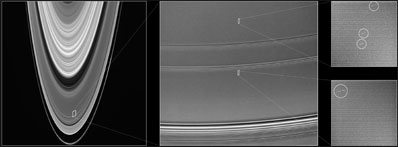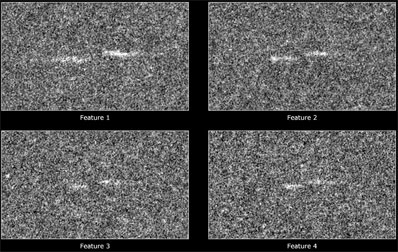
Spaceflight Now +

|

|

|

|

Premium video content for our Spaceflight Now Plus subscribers.

Total solar eclipse
 A total solar eclipse occurred March 29. This video from Side, Turkey shows the period of totality when the moon slid between the Earth and Sun. The eclipse revealed the Sun's glowing outer halo of million-degree gas, called the solar corona. A total solar eclipse occurred March 29. This video from Side, Turkey shows the period of totality when the moon slid between the Earth and Sun. The eclipse revealed the Sun's glowing outer halo of million-degree gas, called the solar corona.

 Play video Play video

Dawn mission reborn
 In early March, NASA cancelled its Dawn mission built to orbit two of the solar system's largest asteroids using ion engine propulsion. Technical problems and cost overruns were blamed. But in this news conference from March 27, agency officials announce NASA's decision to reverse the cancellation and restart the mission. In early March, NASA cancelled its Dawn mission built to orbit two of the solar system's largest asteroids using ion engine propulsion. Technical problems and cost overruns were blamed. But in this news conference from March 27, agency officials announce NASA's decision to reverse the cancellation and restart the mission.

 QuickTime | For iPod QuickTime | For iPod

CEV planning
 Lockheed Martin holds this news conference in Houston on March 24 to announced that it is partnering with the State of Texas to locate the Crew Exploration Vehicle (CEV) program office in Houston, as well as systems engineering, software development and qualification testing, if the corporation wins the NASA contract to build the next generation spacecraft for NASA. Lockheed Martin holds this news conference in Houston on March 24 to announced that it is partnering with the State of Texas to locate the Crew Exploration Vehicle (CEV) program office in Houston, as well as systems engineering, software development and qualification testing, if the corporation wins the NASA contract to build the next generation spacecraft for NASA.

 QuickTime | For iPod QuickTime | For iPod

Expedition 12 recap
 As the Expedition 12 mission aboard the International Space Station winds down, officials managing the flight from Mission Control in Houston hold this retrospective briefing to talk about the highs and lows, the science, the spacewalks and everything in between. As the Expedition 12 mission aboard the International Space Station winds down, officials managing the flight from Mission Control in Houston hold this retrospective briefing to talk about the highs and lows, the science, the spacewalks and everything in between.

 Dial-up video: Dial-up video:
Part 1 | Part 2

 Broadband video: Broadband video:
Part 1 | Part 2

Expedition 13 preview
 International Space Station officials preview the next Expedition mission to the orbiting outpost, which is scheduled for launch March 29. The preview was given during a briefing March 22 from Johnson Space Center. International Space Station officials preview the next Expedition mission to the orbiting outpost, which is scheduled for launch March 29. The preview was given during a briefing March 22 from Johnson Space Center.

 Dial-up | Broadband Dial-up | Broadband

STS-41B: Human satellite
 One of the iconic moments of the early space shuttle program was astronaut Bruce McCandless floating above the brilliantly blue Earth completely disconnected from his spacecraft. He was testing the Manned Maneuvering Unit, a jet-powered backpack that would enable spacewalkers to travel away from the space shuttle to service satellites. In this post-flight presentation, the crew of Challenger's STS-41B mission of February 1984 narrate the film highlights from their mission that also included the first shuttle landing at Kennedy Space Center. One of the iconic moments of the early space shuttle program was astronaut Bruce McCandless floating above the brilliantly blue Earth completely disconnected from his spacecraft. He was testing the Manned Maneuvering Unit, a jet-powered backpack that would enable spacewalkers to travel away from the space shuttle to service satellites. In this post-flight presentation, the crew of Challenger's STS-41B mission of February 1984 narrate the film highlights from their mission that also included the first shuttle landing at Kennedy Space Center.

 Small | Medium | Large Small | Medium | Large

 Become a subscriber Become a subscriber
 More video More video

|

|

|

|
|

|

Cassini finds football-field sized moonlets at Saturn
CORNELL UNIVERSITY NEWS RELEASE
Posted: March 29, 2006
New observations of propeller-shaped disturbances in Saturn's A ring indicate the presence of four small, embedded moons -- and most likely millions more, Cornell University astronomers report.

This collection of Cassini images provides context for understanding the location and scale of propeller-shaped features observed within Saturn's A ring. Credit: NASA/JPL/Space Science Institute
Download larger image version here
|
This is the first evidence of the existence of moonlets bridging the
gap in size between the larger ring moons Pan and Daphnis (several
miles each in diameter) and the much smaller ice particles that
comprise the bulk of the rings. The discovery could lead to a better
understanding of the origin and formation of Saturn's rings and the
solar system as a whole.
Matthew Tiscareno, a Cornell research associate, is lead author of a
paper describing the discovery in the March 30 issue of the journal
Nature.
The four disturbances, which appear as pairs of slightly offset
bright horizontal streaks in an otherwise bland region of the ring,
were captured in two images taken in 2004 by NASA's Cassini
spacecraft. Astronomers say the streaks are indicators of orbiting
moons about 100 meters (328 feet) in diameter: about the length of a
football field, but still too small for even Cassini's highly
sensitive Imaging Science Subsystem (ISS) to see directly, but large
enough to exert an observable gravitational pull on the particles
around them.
"The discovery of these intermediate-sized particles tells us that
Pan and Daphnis are probably just the largest members of the ring
population, rather than interlopers from somewhere else," said
Tiscareno.
A continuum of particle sizes lends strong support to the theory that
Saturn's rings were formed when another object fragmented close to
the planet, breaking into pieces which were then captured by Saturn's
gravitational pull.
"There has always been the question about whether the rings were
primordial material that was unable to grow into a moon or debris
left over from a breakup event," said Joseph Burns, Cornell professor
of astronomy and of theoretical and applied mechanics and paper
co-author, along with Cornell research associate Matthew Hedman and
researchers at other institutions. The discovery doesn't rule out the
accretion model, but "it's a step in that direction," said Tiscareno.
"It's hard for direct accretion to produce particles this large. It's
much easier if you start with a solid icy core, like a shard from a
breakup."

These figures show four propeller-shaped structures discovered by the Cassini spacecraft in close-up images of Saturn's A ring. Credit: NASA/JPL/Space Science Institute
Download larger image version here
|
The discovery also helps explain fully cleared openings such as the
Encke and Keeler gaps within the rings. The gravitational influence
of a larger moon like Pan or Daphnis wraps around the circumference
of the rings, creating a gap. The smaller moonlets begin to create
this effect, the researchers say, but their influence is not strong
enough to prevent particles from falling into the rings ahead of and
behind them.
Like a motorboat's wake on a smooth lake, the four observed
disturbances are particularly visible since the area they inhabit is
otherwise smooth. But the fact that four were found in just two
images covering only a tiny fraction of the ring makes it likely that
millions more exist. By studying them further, researchers hope to
gain a better understanding of how Saturn's rings formed -- and even
about how solar systems form around stars.
"The structures we observe with Cassini are strikingly similar to
those seen in many numerical models of the early stages of planetary
formation, even though the scales are vastly different," said Carl
Murray, a co-author and astronomer at Queen Mary College, University
of London. "In this way, Cassini is giving us unique insight into the
origin of planets."
The Cassini-Huygens mission is a cooperative project of NASA, the
European Space Agency and the Italian Space Agency. The Jet
Propulsion Laboratory, a division of the California Institute of
Technology, manages the mission for NASA.
During its Saturn tour, as currently planned, Cassini will complete
74 orbits of the ringed planet, 44 close flybys of the moon Titan and
numerous flybys of Saturn's other icy moons.
|

|

|

|

|



